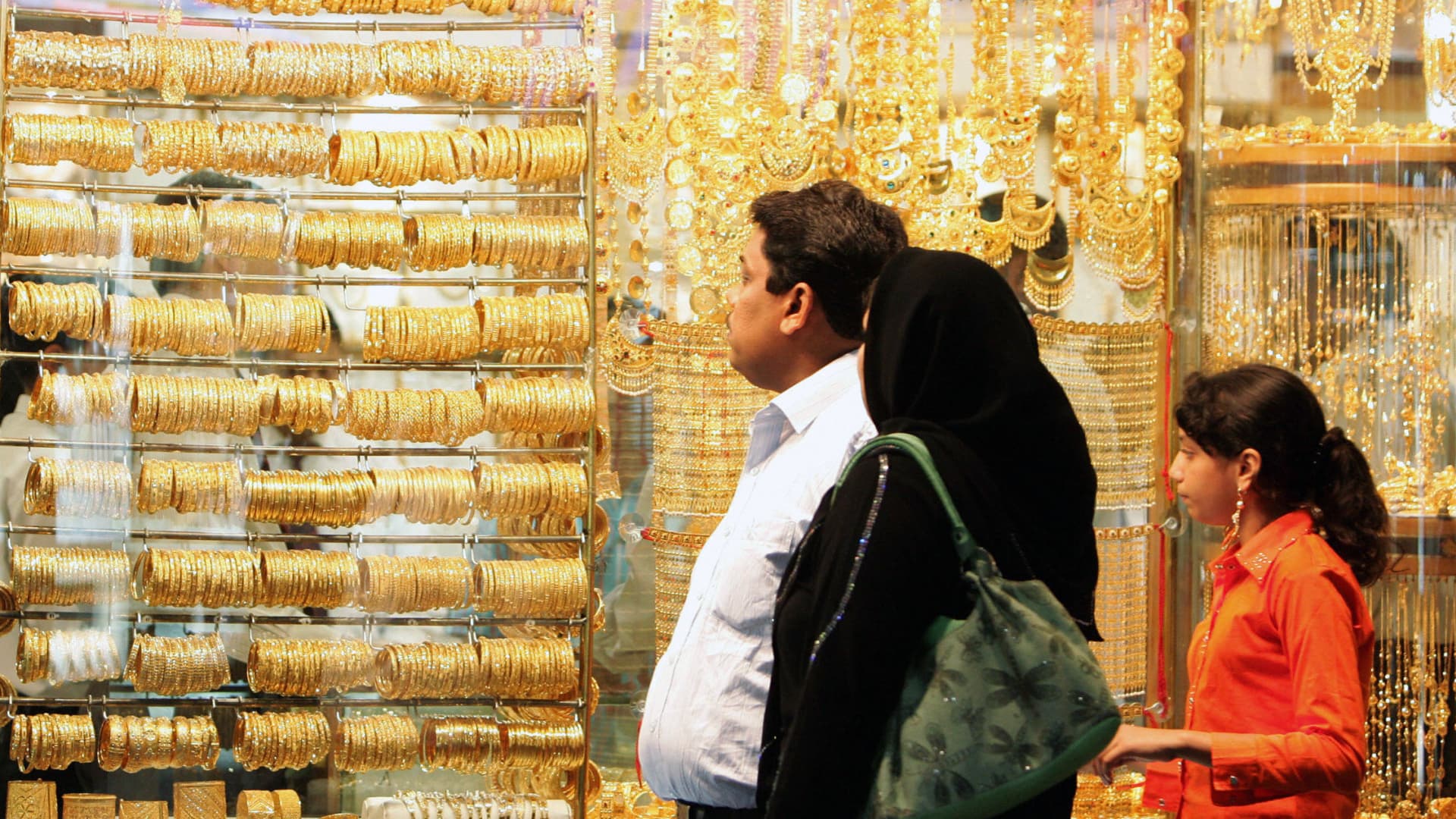Gold at $4,000? Analysts share their 2023 outlook as inflation, recession fears linger

Gold prices could surge to $4,000 per ounce in 2023 as interest rate hikes and recession fears keep markets volatile, said Juerg Kiener, managing director and chief investment officer of Swiss Asia Capital.
The price of the precious metal could reach between $2,500 and $4,000 sometime next year, Kiener told CNBC’s “Street Signs Asia” on Wednesday.
There is a good chance the gold market sees a major move, he said, adding “it’s not going to be just 10% or 20%,” but a move that will “really make new highs.”
Kiener explained that many economies could face “a little bit of a recession” in the first quarter, which would lead to many central banks slowing their pace of interest rate hikes and make gold instantly more attractive. He said gold is also the only asset which every central bank owns.
According to the World Gold Council, central banks bought 400 tonnes of gold in the third quarter, almost doubling the previous record of 241 tonnes during the same period in 2018.
“Since [the] 2000s, the average return [on] gold in any currency is somewhere between 8% and 10% a year. You haven’t achieved that in the bond market. You have not achieved that in the equity market.”
Kiener also said investors would look to gold with inflation remaining high in many parts of the world. “Gold is a very good inflation hedge, a great catch during stagflation and a great add onto a portfolio.”
Despite strong demand for gold, Kenny Polcari, senior market strategist at Slatestone Wealth, disagreed that prices could more than double next year.
“I don’t have a $4,000 price target on it, although I’d love to see it go there,” he said on CNBC’s “Street Signs Asia” on Thursday.
Polcari argued that gold prices would see some pullback and resistance at $1,900 an ounce. Prices would be determined by how inflation responds to interest rate hikes globally, he said.
“I like gold. I’ve always liked gold,” he said. “Gold should be a part of your portfolio. I think it is going to do better, but I don’t have a $4,000 price target on it.”
Gold rallied on Tuesday as the U.S. dollar weakened after Japan’s central bank adjusted its yield curve control policy. The announcement caused gold prices to rise 1% above the key $1,800 level, before dipping lower Wednesday as the dollar recovered ground.
China’s a big buyer
When asked if supply is low due to high demand, Swiss Asia Capital’s Kiener said “there’s always supply, but maybe not at the price you want.”
But high prices are no match for buyers in China who are paying a premium for the precious metal, he said.
Earlier this month, China’s central bank announced it added about $1.8 billion worth of gold to its reserves, bringing the cumulative value to around $112 billion, Reuters reported.
“Asia has been a big buyer. And if you look at the whole trade, essentially gold is leaving the West, and it’s going into Asia,” he added.
Advice for investors
Nikhil Kamath, co-founder of India’s largest brokerage Zerodha, said investors should allocate 10% to 20% of their portfolio to gold, adding that it’s a “relevant strategy” going into 2023.
“Gold also traditionally has been inversely proportional to inflation, and it has been a good hedge against inflation,” Kamath told CNBC on Wednesday.
“If you look at how much gold you require to buy a mean home in the 70s, you probably require the same or lesser amount of gold today than you did back in the 70s, or the 80s, or the 90s,” he added.









